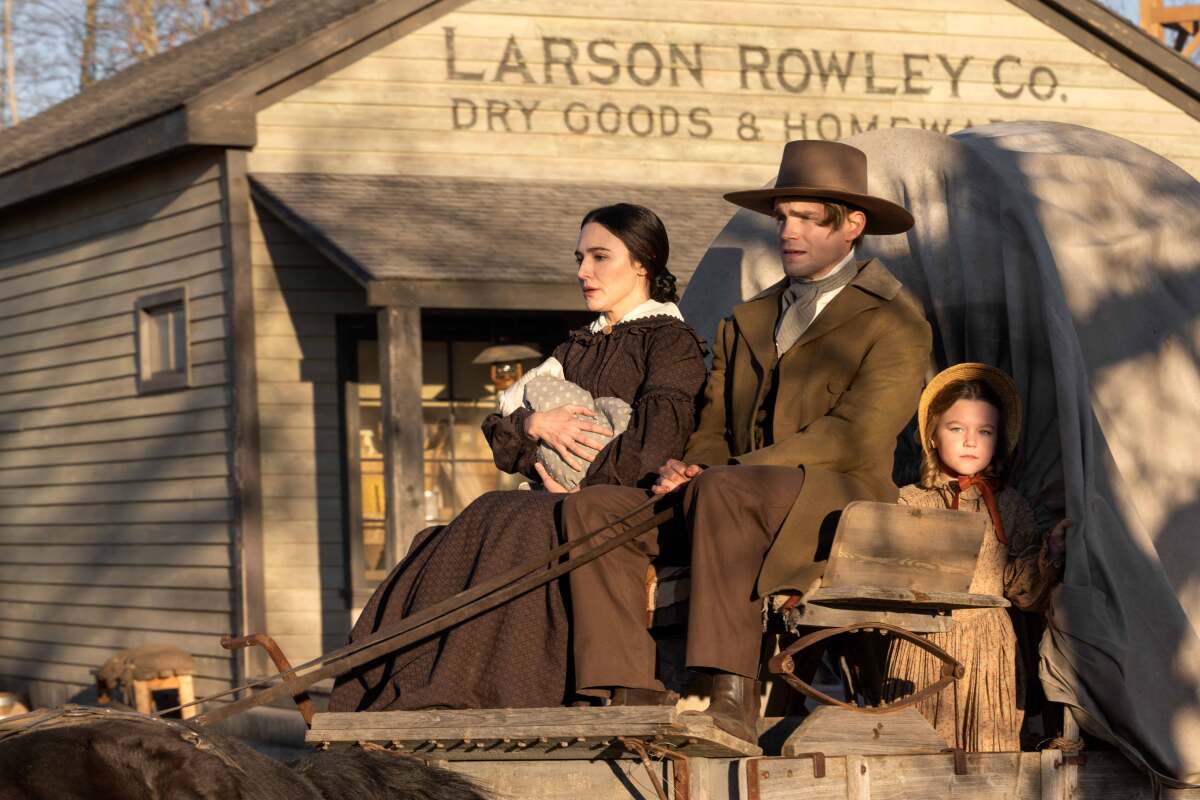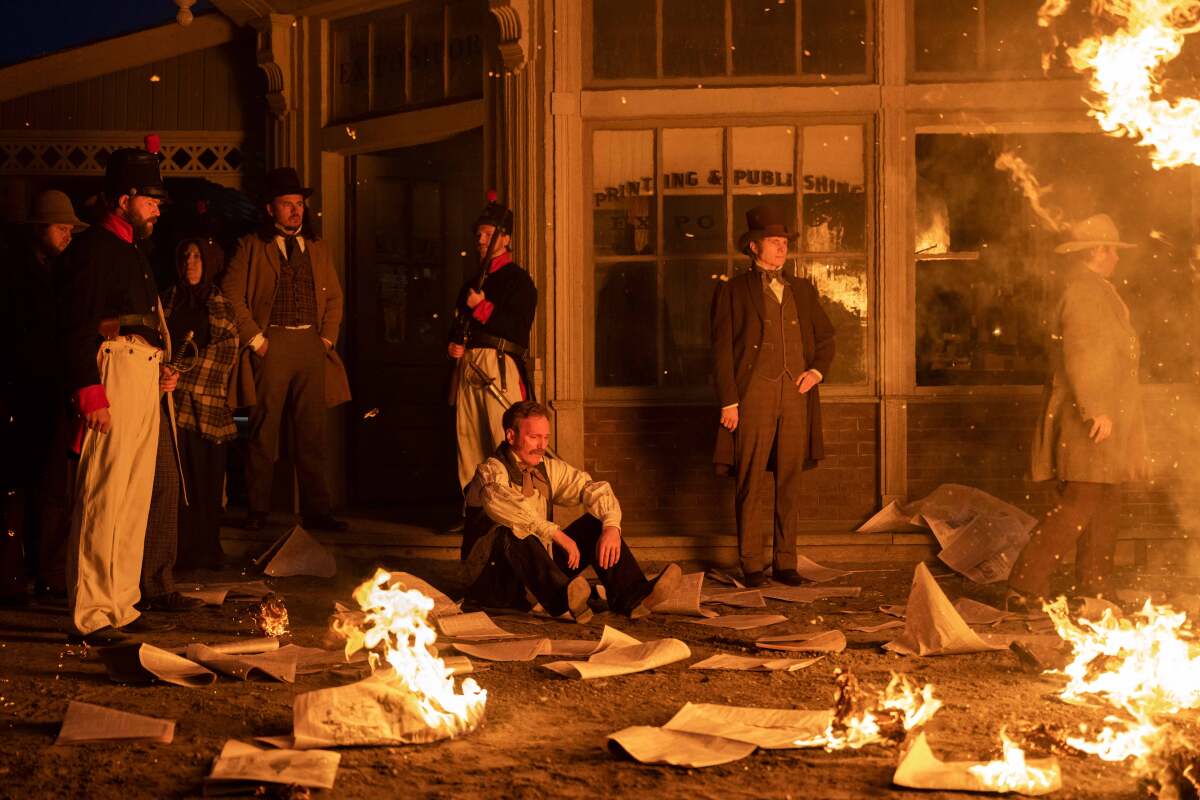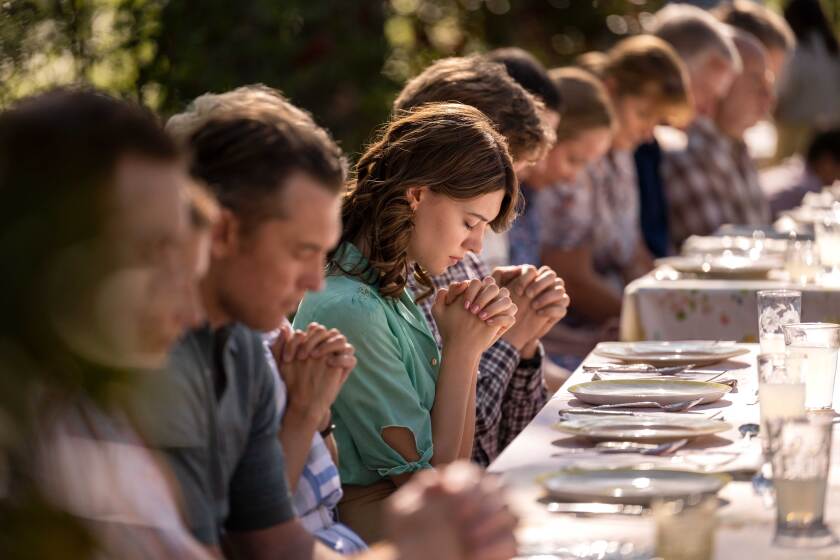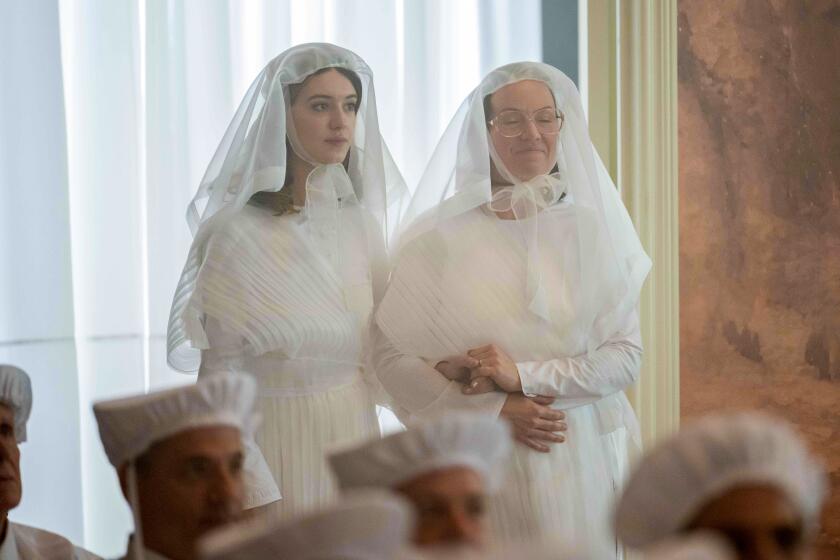How ‘Under the Banner of Heaven’ got Mormon history right. Down to the ‘bullet holes’

- Share via
“Under the Banner of Heaven” is more than just a true crime detective story. It’s also a period piece tracing the history of the Church of Jesus Christ of Latter-day Saints and the journey of its founding prophet, Joseph Smith.
As Det. Jeb Pyre (Andrew Garfield) investigates the brutal 1984 killings of Brenda Lafferty (Daisy Edgar-Jones) and her infant daughter, “One Mighty and Strong,” the series’ fifth episode, flashes back to a defining moment for Latter-day Saints: the killing of Smith and his brother, Hyrum, in Carthage, Ill., in 1844.
Smith and a growing legion of followers had pushed across the country, eventually settling in Nauvoo, Ill., in 1839 after fleeing Ohio and a violent expulsion from Missouri.
But in Illinois, Smith was arrested on suspicion of inciting a riot after he endorsed the destruction of the printing presses belonging to a dissident newspaper that had criticized Smith for plural marriage and other controversial doctrines.
Smith and his brother had been taken into custody at the Carthage Jail to await trial when they were attacked by a frenzied mob. Hyrum was killed as he tried to block the door; Joseph was then shot multiple times before he plummeted out the window.
“This is a story that every young Mormon learns,” said series creator Dustin Lance Black, who was raised in the Church of Jesus Christ of Latter-day Saintsand directed “One Mighty and Strong.” The familiarity of this saga in church history made re-creating it in 21st century Canada especially daunting.
In ‘Under the Banner of Heaven,’ based on the book by Jon Krakauer, Dustin Lance Black delivers an unflinching portrait of the faith he grew up in.
“The challenges with the historical work were threefold,” said production designer Renee Read. “Weather was not our friend. We had a lengthy timeline, and [the series’ historical action] span[s] a lot of decades. And it’s very recent history, so it’s well documented and part of the collective consciousness, meaning there’s not a lot of wiggle room” to take poetic license, she added.
For starters, Smith’s killing, which took place on a sunny day in June, was “filmed in late November in the southern plains of the Canadian Arctic climate,” said Read. This meant the production had to get rid of the snow blanketing the ground. Read and the show’s cinematographer would fly overhead in a helicopter to identify the areas that needed clearing.
The production also contacted oil rigs in northern Alberta in order to track down specially designed dry steam trucks that would work in colder weather. (“We accidentally turned our entire Nauvoo town into a skating rink the day before” using a wet steam truck, Read said.)

Because the red limestone jail, built in 1839, is such a readily identifiable landmark, Read did not have the option of repurposing a set from another production.
Nor was filming at the actual jail, preserved by the church and operated as a historic site, an option. But its preservation made it easier for Read and her researchers to figure out the details, “right down to the location of the bullet holes in the door, the type of wood, the number of window mullions — everything,” she said.
Read and her team replicated the exterior of the Carthage Jail, with its uneven stones, using vacuum-form simulated stones arranged Tetris-style in varying directions and painted by the scenic department to resemble red limestone.
Through insider sources and meticulous research, Hulu’s ‘Under the Banner of Heaven’ sheds light on aspects of church life rarely seen by outsiders.
“The production design team, to the last detail, made sure that what was on that set was actually in that jailer’s room, and that what they’re wearing was accurate, that the order in which bullets were fired was accurate,” said Black. “If we were going to do it, we wanted to do it right.”
“All the giant, historical moments in the religion — from the founding of it, to young Emma and Joseph Smith, to writing the Book of Mormon, to all the many horrific massacres and disasters that happened — we cover them all,” said costume designer Joseph La Corte. The historical timeline, which covers the 1820s through the 1850s, was especially tricky because “the silhouettes changed every decade,” said La Corte, who coped by thinking of “Banner” as two separate shows. “It was just overwhelming to try to work as one piece.”
La Corte was lucky that the clothing and watch worn by Hyrum Smith on that day have been preserved and displayed at the church museum.
A more monumental task was outfitting Joseph Smith’s wife, Emma (Tyner Rushing), who wears 13 different costumes over the course of the series — most of them handmade and one of which took 110 hours to construct.
Using preexisting costumes was not an option, he said, “because if it’s at a rental house, it’s probably already been on camera somewhere.” Her sartorial journey traces her rise from middle class to becoming, with her husband, “the face of the religion,” La Corte said. “Everything becomes more elevated.”
More to Read
The complete guide to home viewing
Get Screen Gab for everything about the TV shows and streaming movies everyone’s talking about.
You may occasionally receive promotional content from the Los Angeles Times.








